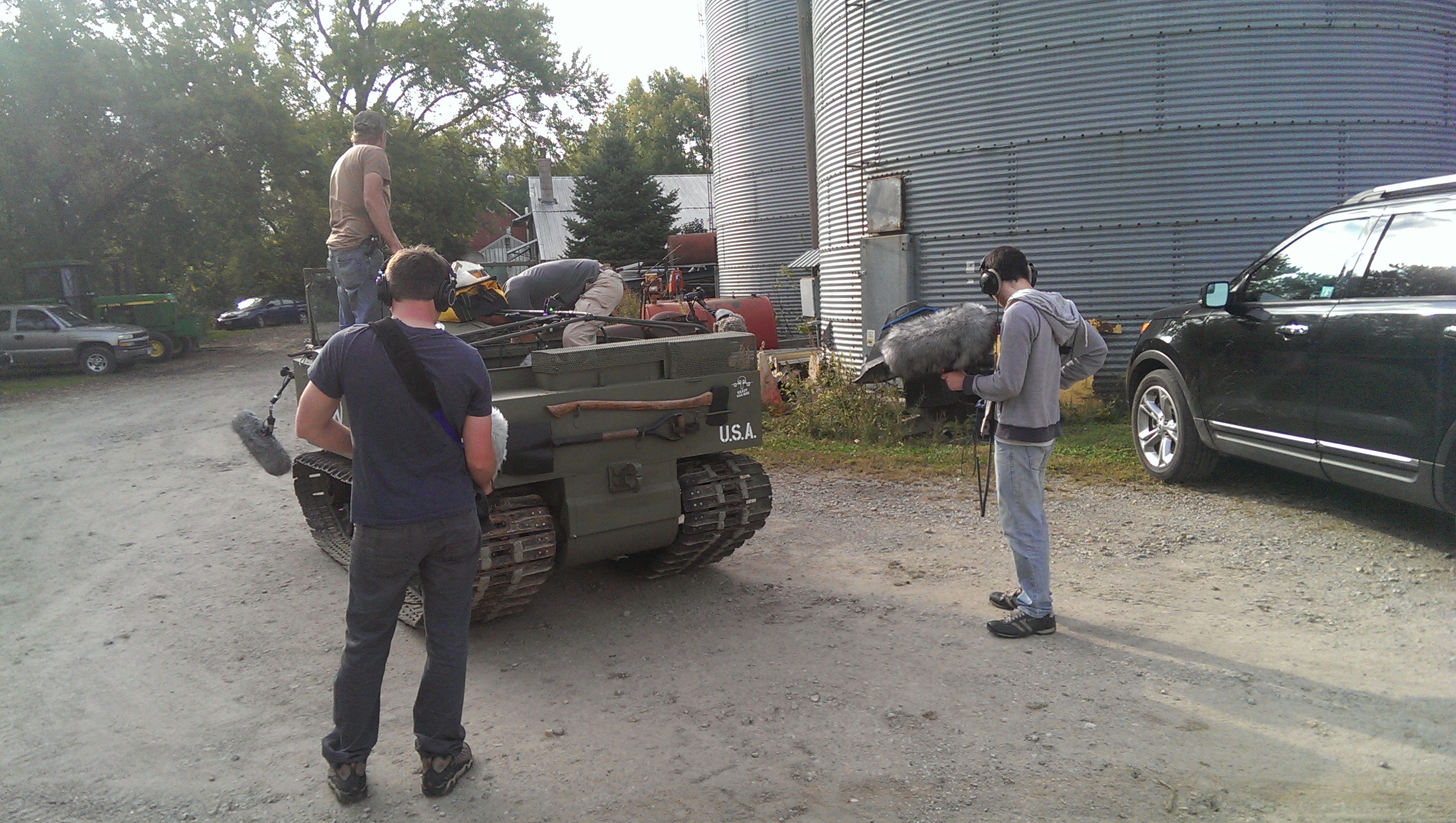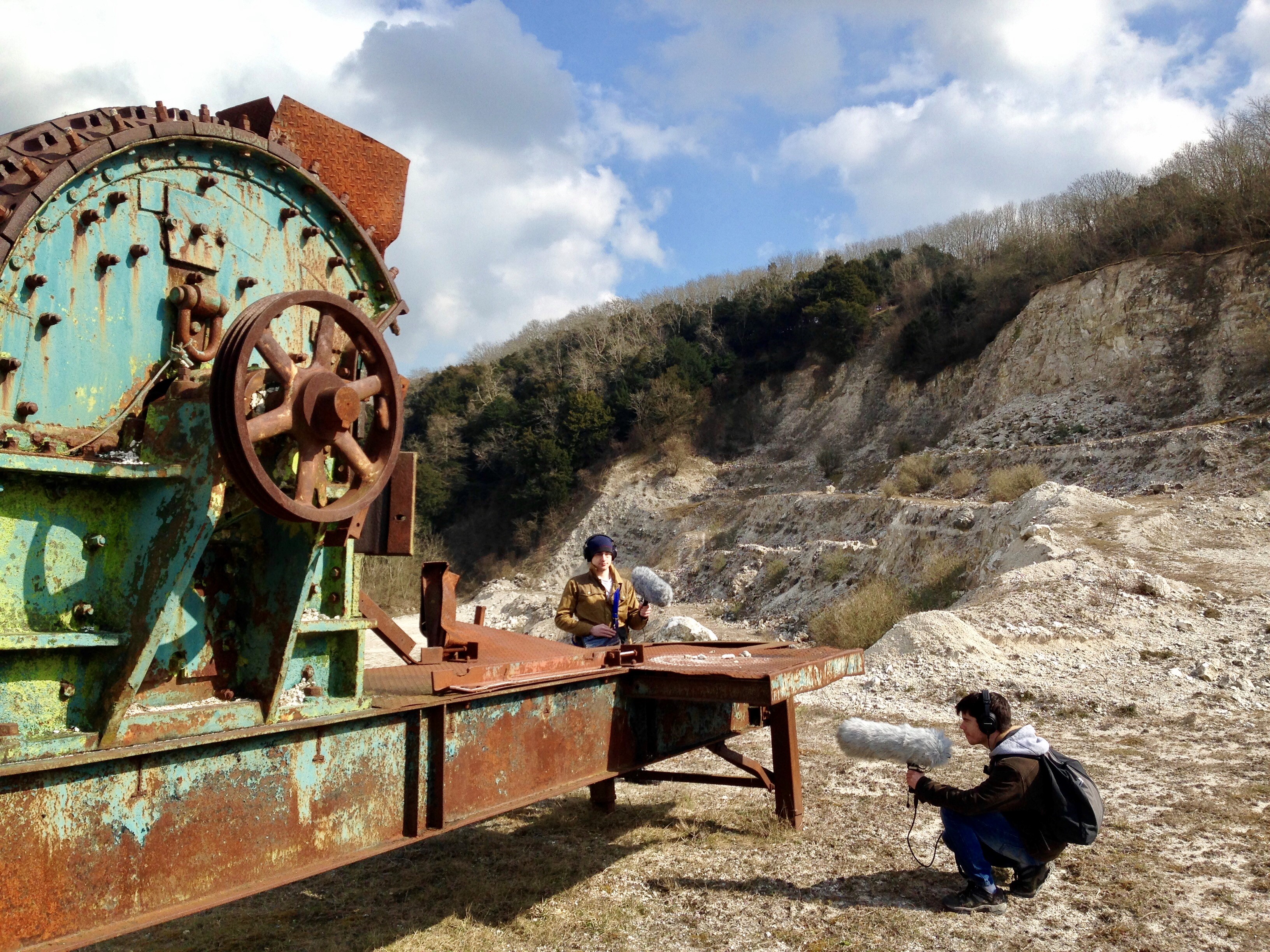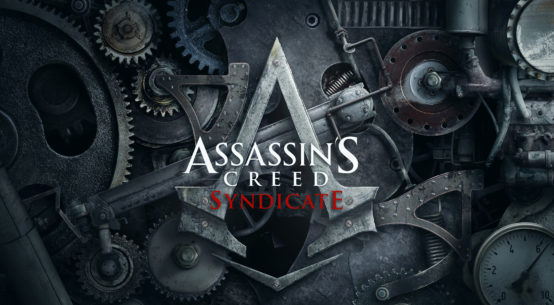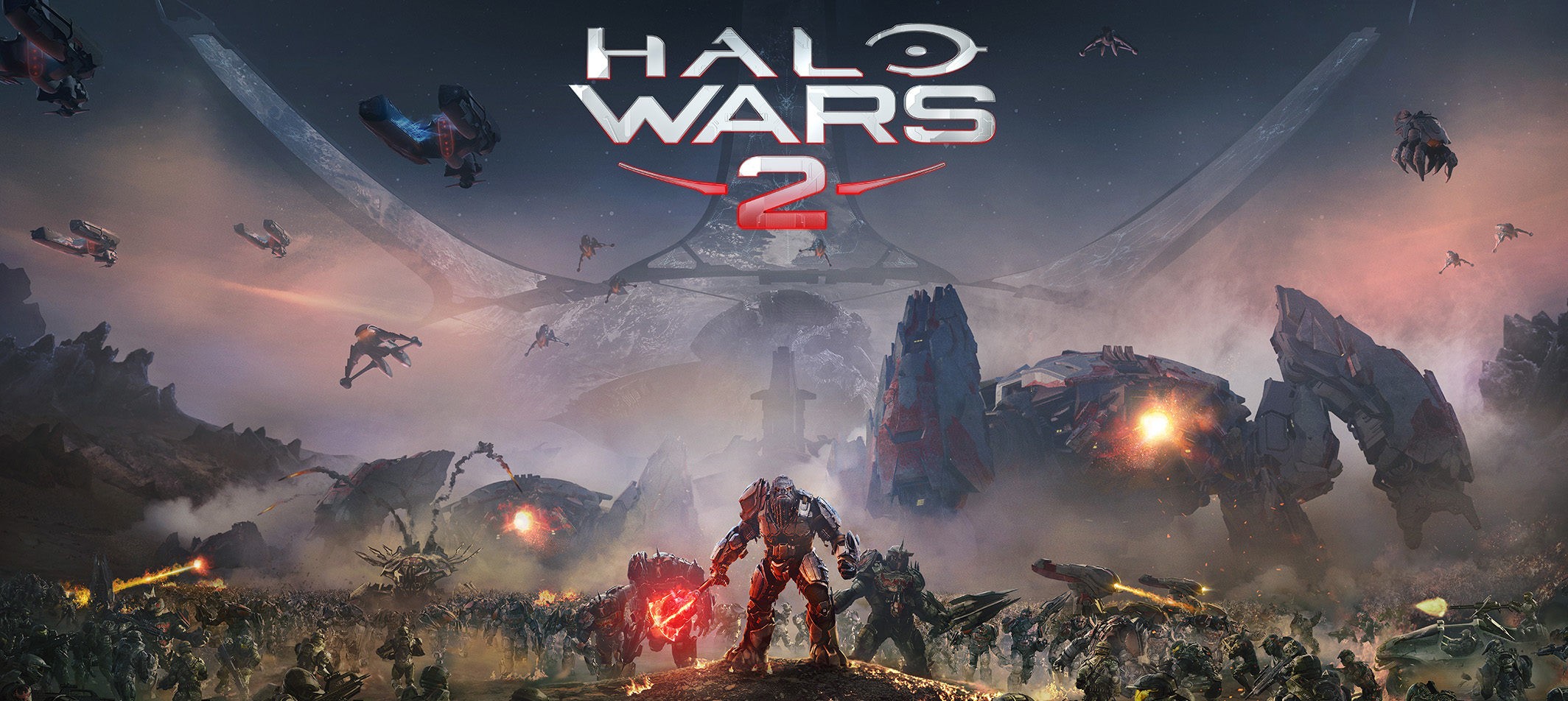
Sam Hughes speaks to Sam Cooper and the audio team at Creative Assembly about the Microsoft release, Halo Wars 2. Read the full interview below:
Thanks for joining us, we’re very much looking forward to finding out more about the audio of Halo Wars 2. So firstly, what are the big changes from Halo Wars 1 in terms of audio?
It’s hard to believe but the original Halo Wars was released in 2009. 8 years ago. With Halo Wars 2 we have a lot more console resource to work with and are able to use higher quality assets, more variation, bigger / multichannel assets and so on. We have a lot more breathing room to create a modern, AAA sounding RTS.
The score is also really unique and, while it’s tied to the original with some thematic material, it’s a unique sound to Halo Wars 2. It brings a lot of character to the game and reinforces some of the big changes in the game like the introduction of a new race the Banished.
The dialogue system is very different as well! We pulled out all the stops to create a dialogue system that’s both characterful and highly informative for the player. Radio chatter notifies the player of events that are happening all around the battlefield. We recorded around 30,000 lines of dialogue for Halo Wars 2!
Overall it’s all very different. The audio is all brand-new for Halo Wars 2, there’s no legacy material in there.
How was it working with the Halo franchise, such an established IP, how do you bring the iconic sound of an AAA FPS to world of an AAA RTS?
Halo is a dream franchise to work on with some really iconic sounds! A lot of us have grown up playing Halo games so it was a really exciting project for us.
For Halo Wars 2 we were working on this IP for the first time; we had a very supportive partner in 343i and we really benefited from their deep franchise knowledge. We worked closely with Paul Lipson (Vice President – Formosa Interactive), to maintain the classic “Halo sound” whilst developing audio for brand new content; new weapons, vehicles and awesome leader powers.
Since the perspective is completely different from an FPS, the key areas of focus are very different. A Scorpion tank still sounds like a Scorpion but is authored to sound good from a vantage point 30ft high in the air for example.
With the introduction of The Banished and the new units, how has this influenced the evolution of your sonic choices?
The Banished are a Brute-led, post-apocalyptic style race that rebelled against the Covenant. They’re kind of rough-around-the-edges. That really influenced everything about their sound from the movement Foley and source recordings, to their vehicles engines and of course music aesthetic.
In contrast with the UNSC (who are quite well equipped and militaristic), the Banished are kind of a guerrilla faction that uses scavenged Covenant and UNSC technology.
We recorded leather, loose metal plates and chains to create the Banished Foley whereas the UNSC Foley was more modern synthetic fibres and heavy plastics. The Banished vehicles and buildings are also designed to sound as though the technology that’s powering them is a little grimy and hacked together.
There are some new UNSC units too, like the Kodiak for example. It’s a support artillery unit that locks down and fires a barrage of shells at the enemy from a distance. The firing sound for the Kodiak is really explosive and ferocious. On the other end of the spectrum you have the Jackrabbit that nips around really quickly and fires grenades out of a compact grenade launcher.
Audio is used to communicate a lot about a unit’s character. With these new units they needed to sound unique in that sense, but also needed to fit comfortably within the Halo universe.
Whilst playing HW2, it is very apparent that there is a huge amount of sound events that will attempt to fire in a short frame of time. What has been your approach to the mixing process?
Our mix methodology is all about heavy prioritisation that adapts based on gameplay context.
You’re right, there are potentially thousands of sound events, competing for space in a very large battle. Unless we’re very controlled about what’s allowed to cut-through in each moment, we could end up with a very cluttered and chaotic sound.
It was a big challenge for us to get the right sounds across in all situations, for example the player could be focused on a quiet ravine one second and then an intense and explosive battle the next.
In a quiet moment you want to hear the subtler, ambient and environmental audio, maybe one of your Marines idly chatting and kicking up the dirt, whereas that stuff will be totally lost during battle and will work against you when you’re trying to mix.
Even within the context of battle we need to consider the size of the battle, how many weapons are firing, what type of weapons are firing, is anyone using a special ability? That kind of thing. There are a lot of volume and EQ adjustments being made on-the-fly to keep control of the soundscape and help the player to hear the most important sounds in each moment.
If the action gets really heavy, we actually stop triggering certain events altogether. This helps with performance as well as supporting the mix. If something is so quiet by contrast to the other events that are playing, you may as well turn it off altogether, saving voices and creating space in the mix.
We use data about the size of a battle and the volume output from various highly prioritised busses to drive lower-level event limiting. Then we check to see what the camera is focused on to work out what needs to play; outside of that area of focus, we start to de-prioritise.
HW2 contains so many environments, weapons, vehicles, and units, both human and alien. What kind of source did you record and create for these?
We’re really passionate about recording source. For HW2 we recorded lots of custom audio including military vehicles, weapons and explosions, aircraft, ambience and environmental audio and tons of custom Foley.
On a multiplayer map like Badlands for example, it sounds like an arid, alien landscape and that’s mostly made up of recordings we gathered in an abandoned limestone quarry. When the alien plant life is squelching, that’s us in the studio with a bunch of fruit and pasta, mushing it around!
The flamethrowers are also custom recordings that the team gathered whilst on a trip to Minnesota to record a load of weapons that are difficult to record in the UK. They also recorded tanks and explosives while they were there. 343i hired a really talented sound recordist (John P Fasal), to bring his whole rig to the session and capture tanks, firearms and explosives over 5 days.
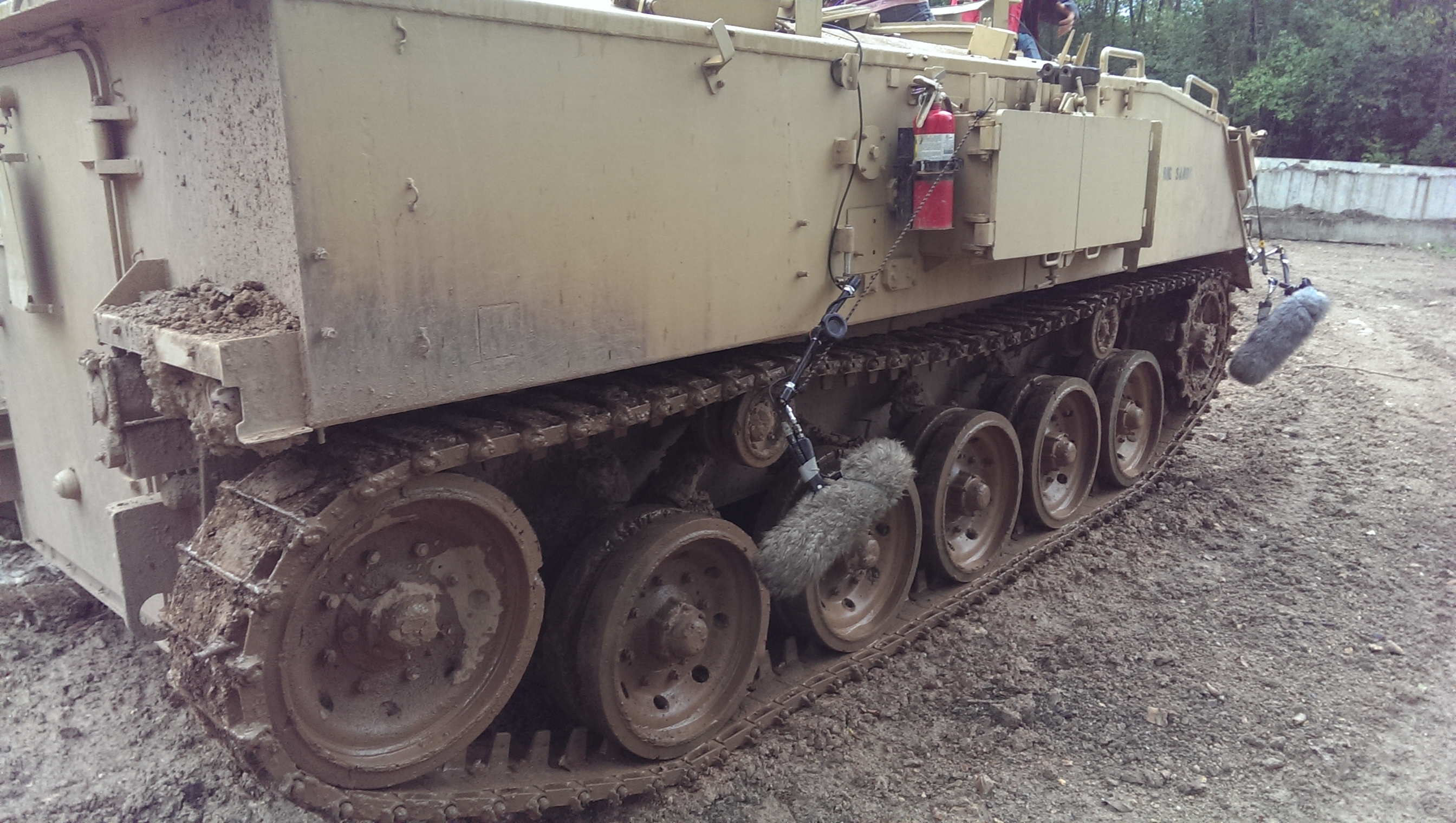
The top down view must have provided a challenge in many areas throughout the game. How did you create “epic” moments, and draw the player’s attention to key story moments whilst dealing with this challenge?
When you’re a distant observer of the action rather than being embedded in it, it does change things a bit. There are a lot of opportunities for epic moments that are unique to HW2 as well.
Many of the spectacular leader powers are launched from space and zoom past the camera to their target on the ground. We supported those kind of moments with surround assets that really give a sense of depth and size to those events.
In single player we support a lot of narrative moments with bespoke audio to sweeten the in-game sound and help certain gameplay events pop out. Then we script music that’s appropriate to the emotional context wherever it’s needed.
One thing the top-down view allowed us to experiment with was reverb. We did a lot of brainstorming around what environmental reflections should sound like from this vantage point. In the end we went for a three-tiered approach where we generate directional early-reflections and echoes which are sort of “glued” together with a global convolution reverb.
This approach to reverb really helps us ground the action in the world and creates some epic moments; when there’s a huge explosion and the echo bounces back across the map a couple of seconds later it sounds very cool.
An RTS like this requires a lot of information being told to the player through dialogue, audio notifications and more. What was your approach to this?
Dialogue was a big focal point for this game. We rely on it to communicate so much information to the player. We use radio chatter to let the player know if a unit is taking fire and by what type of enemy unit, if a friendly unit is down, if a hero unit has appeared and many other important callouts.
It’s great but has the potential to get fatiguing quite quickly so it required a lot of iteration to balance trigger rates and cool-downs and to prioritise dialogue correctly. Only the highest ranking unit in a group will talk to the player over coms and their callouts are prioritised in terms of the most important information for buy tadalafil pills the player. If a scarab is attacking your base for example, you want to know about that over spotting a Grunt squad emerging from the fog of war. If it’s all quiet though you need to know about those Grunts!
In addition to dialogue we use a large pool of notification stingers to grab the player’s attention quickly and to highlight major events. If a base is destroyed, a friendly hero unit is down or you earn a leader point for example, you get custom stingers for those since they’re the things you need to react to very quickly.
The music system also plays a big role in providing contextual information to the player. The composition gets more and more intense as you get closer to victory or defeat and each cue mixes in real-time based on the intensity of on-screen action.
In what way did you implement the music to work alongside the already very busy scenes? Did you collaborate closely with the composer?
Yeah we worked really closely with Paul and the composing team who delivered a great, hybrid score for HW2. It was a collaboration between a few contributors: Finishing Move (Brian Trifon and Brian Lee-White) specialise in electronic composition and musical sound design and Gordy Haab writes really filmic, huge orchestral compositions.
They really understood what our goals were interactively. A large portion of the music is split into pre-rendered sub-mixes that can ramp up or down depending on the combat intensity. That meant the composers often needed to deliver 4 mixes per piece and we cross-fade between those versions depending on how many units are fighting across the whole battle field. It’s a method that makes the interactivity very seamless.
Let’s discuss the level of detail this game required. In terms of creating detailed and believable worlds and characters, you must have had to decide how much detail you went into from scene to scene?
We went to great lengths to make sure we got a lot of detail into every aspect of the game.
Vehicles all have engine models with gear-shifting and surface-switching for their tyres. That’s something you might question at first in a top-down RTS but hearing a Warthog skid through the dirt or hit its rev limiter as it shoots over a big jump is really satisfying.
Bullet whizz-bys, ricochets and impacts sound great when you’re close enough to catch them. Those sounds help it combat feel really exciting and dangerous when you’re up-close to the action. Also, when a vehicle or building explodes you also get audio triggering from the individual impacts from each part that’s thrown out.
In terms of atmospheric and environmental audio, we worked with a similar amount of detail as with Alien: Isolation and we clear out the finer details when they’re not needed.
Alien: Isolation was much slower-paced so you would hear the details more. In Halo Wars 2, you will still hear subtler sounds like dust particles rolling across a sandy landscape and gentle water babbling in small streams. The moment a skirmish kicks off we start turning those things off and the detail becomes more about the character of each weapon and the rumble of a group of grizzly tanks rolling in.
We’re really pleased with the level of detail overall; we feel like it’s often the little details that you’re not consciously aware of that really raise the quality bar.
LINKS
Halo Wars
Creative Assembly
We hope you enjoyed the interview, feel free to check out more of these at the Interviews page. Also, don’t forget to sign up to our Monthly Newsletter to make sure you don’t miss anything!
We appreciate all the support!
The Sound Architect


